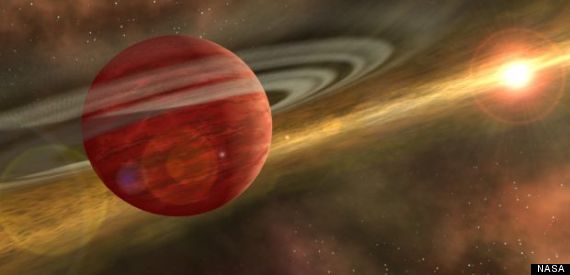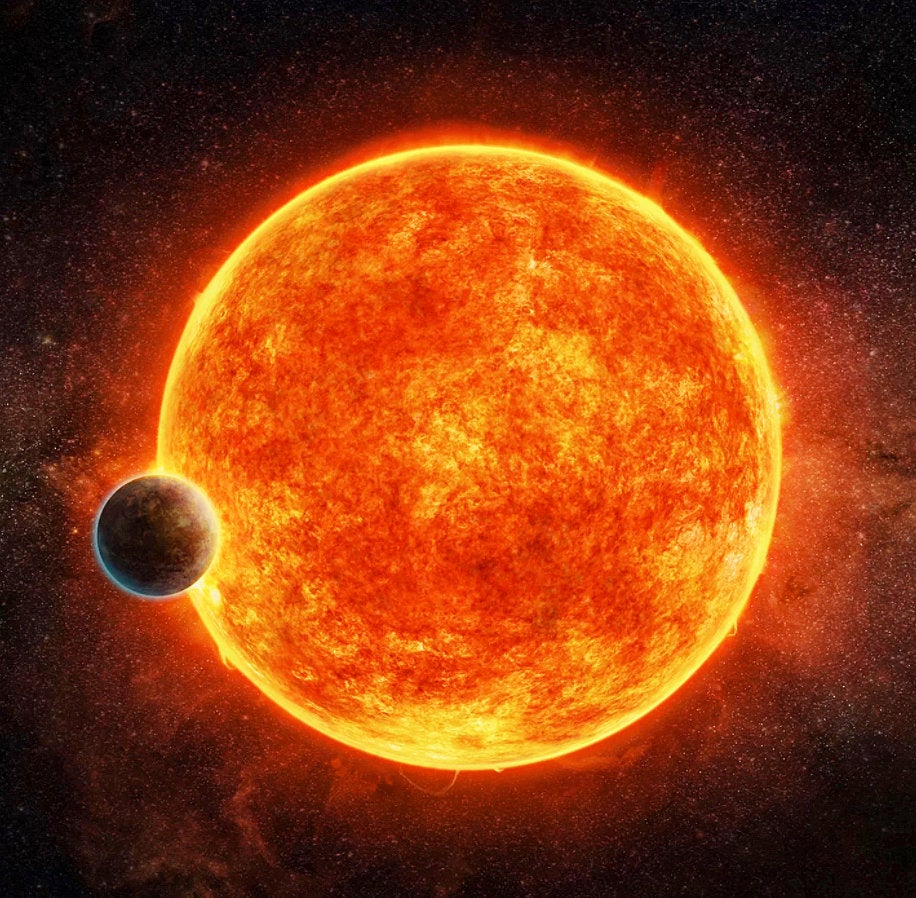Well, that shouldn't be there.
An international team of astronomers has discovered a faraway planet that orbits its star at a distance of 60 billion miles, or about 650 times the distance from the Earth to the sun.
That orbital distance -- far greater than any other planet seen previously -- suggests that current theories about how planets form may be off-target.
"This system is especially fascinating because no model of either planet or star formation fully explains what we see," Vanessa Bailey, a fifth-year graduate student in the University of Arizona's astronomy department and the team's lead researcher, said in a written statement.

An artist's conception of HD 106906 b shows the distant planet orbiting its host star.
(Image courtesy NASA/JPL-Caltech)
Astronomers theorize that orbiting planets like this one -- dubbed HD 106906 -- are composed of gas and debris. But, based on the amount of time this formation process requires, it's unlikely that a planet of this mass could form at such a far distance from its parent star.
Under another theory, in which giant planets form quickly from the collapse of a primordial disk, larger planets may come into existence. However, it's unlikely that a disk would contain enough mass to form a planet the size of HD 106906 b.
Further study of the estimated 13-million-year-old planet should provide some insight into how the planet formed, and should also help astronomers advance current theories.
"Systems like this one, where we have additional information about the environment in which the planet resides, have the potential to help us disentangle the various formation models," Bailey said in the statement. "Future observations of the planet's orbital motion and the primary star's debris disk may help answer that question."
The team submitted their research on the discovery of the distant orbiting planet for publication in Astrophysical Journal Letters.
